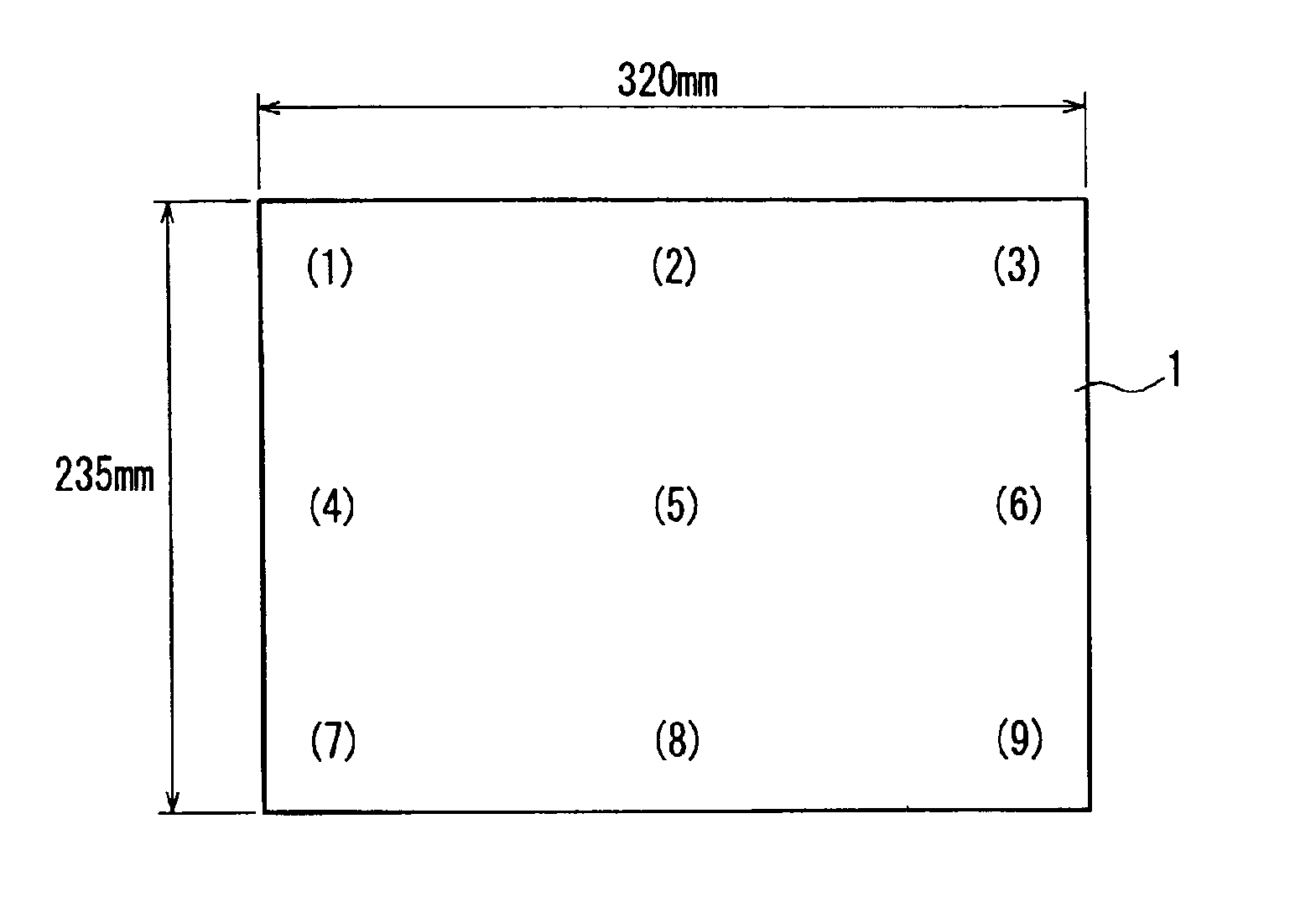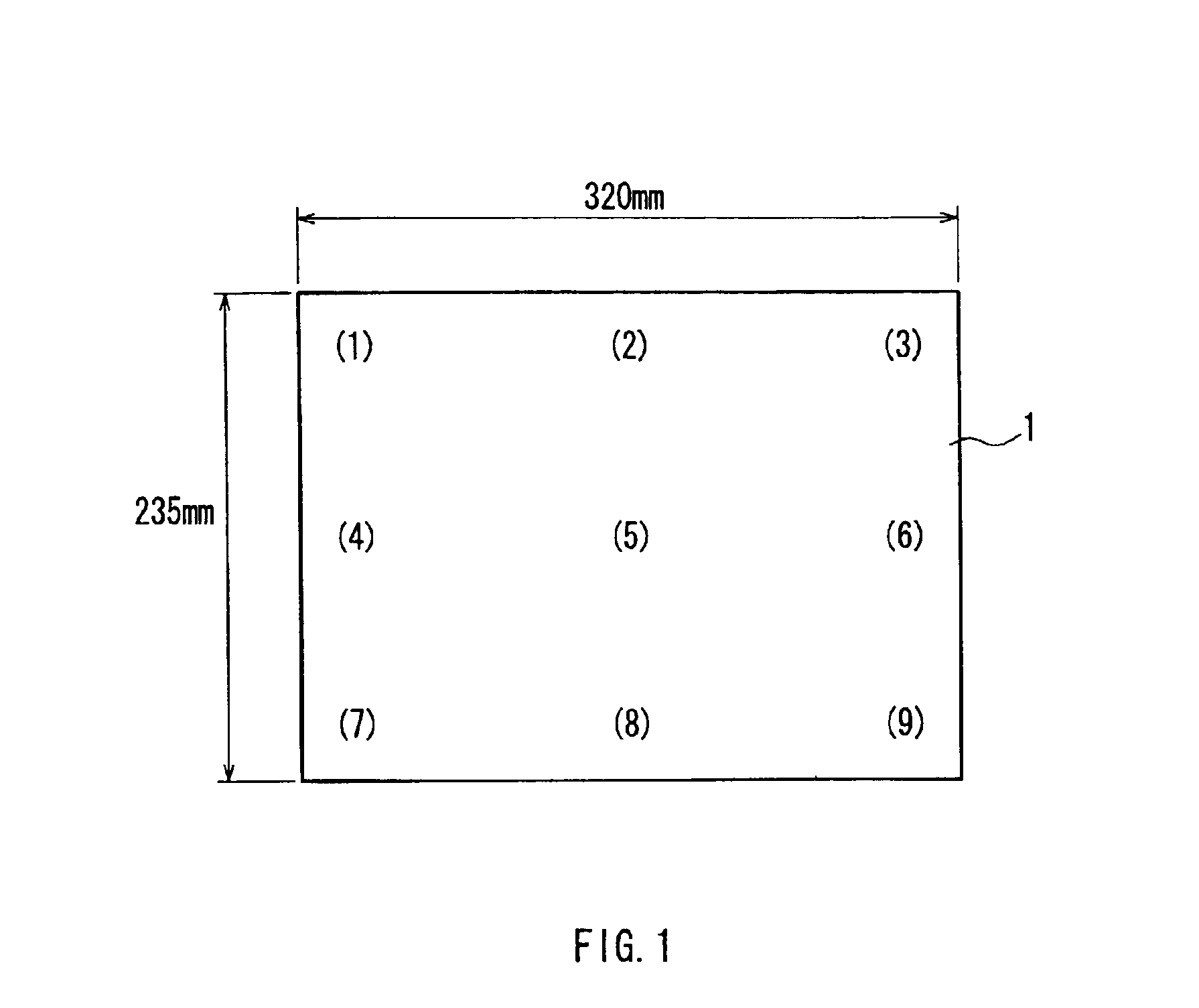Polarizing film and image display
a technology of polarizing film and image display, which is applied in the field of polarizing film, can solve the problems of deterioration of display characteristics, large variation in the size of the polarizing plate, and instability of the size of the polarizing plate, and achieve the effects of reducing force, suppressing warping of the liquid crystal panel, and excellent display characteristics
- Summary
- Abstract
- Description
- Claims
- Application Information
AI Technical Summary
Benefits of technology
Problems solved by technology
Method used
Image
Examples
example 1
[0124]A PVA film having a thickness of 45 μm (polarization degree: 2400; saponification degree: 99.9%) was swollen in pure water. Then, the film was impregnated to dye in an aqueous solution containing a mixture of 1 wt % iodine and 3 wt % potassium iodide. Next, the film was impregnated in an aqueous solution of 4.5 wt % boric acid, stretched in the solution to 5.3 times its original length in the longitudinal direction, and subsequently impregnated in an aqueous solution of 5 wt % borax for further stretching, and thus, the total stretch ratio in the longitudinal direction was 5.5. After the stretching, moisture on the film surface was removed, and the film was dried at 50° C. This stretched film, having a thickness of 18 μm, was used for a polarizer. TAC films having a thickness of 80 μm were bonded to the both surfaces of the polarizer through an adhesive based on a water soluble PVA, and the film was further dried at 70° C. for 6 minutes to form a polarizing plate.
[0125]The thu...
example 2
[0126]A PVA film having a thickness of 30 μm (polarization degree: 2400; saponification degree: 99.9%) was dyed similarly to Example 1. A polarizer (11 μm in thickness) was obtained from the PVA film similarly to Example 1 except that the stretch ratio in the aqueous solution of boric acid was 5.7 and the total stretch ratio after the stretching in the aqueous solution of borax was 6.0. An unstretched PET film 75 μm in thickness was bonded to the both surfaces of the polarizer through the adhesive, and the polarizer was dried at 65° C. for 6 minutes to form a polarizing plate.
[0127]The thus obtained polarizing plate had an elastic modulus of 2740 N / mm2. The transmittance was 43.3%, and the polarization degree was 99.95%.
example 3
[0128]A PVA film having a thickness of 40 μm (polarization degree: 2400; saponification degree: 99.9%) was dry-stretched in the longitudinal direction 5 times its original length, dyed similarly to Example 1, and impregnated in the aqueous solution of boric acid so as to be stretched 1.2 times further in the longitudinal direction. After removal of moisture on the surface, the film was dried at 50° C. to form a polarizer (8 μm in thickness). The polarizer was rolled onto a core, and then bonded to polyolefin-based transparent films (50 μm in thickness) on both surfaces through the adhesive while being dried at 40° C., thereby forming a polarizing plate.
[0129]The transparent film was prepared in the following manner. First, a solution having a solid content of 15 wt % was prepared by dissolving in methylene chloride 75 weight parts of an alternating copolymer of isobutene and N-methyl maleimide (a content of N-methyl maleimide was 50 mol %) and 25 weight parts of acrylonitrile-styren...
PUM
| Property | Measurement | Unit |
|---|---|---|
| elastic modulus | aaaaa | aaaaa |
| thickness | aaaaa | aaaaa |
| transmittance | aaaaa | aaaaa |
Abstract
Description
Claims
Application Information
 Login to View More
Login to View More - R&D
- Intellectual Property
- Life Sciences
- Materials
- Tech Scout
- Unparalleled Data Quality
- Higher Quality Content
- 60% Fewer Hallucinations
Browse by: Latest US Patents, China's latest patents, Technical Efficacy Thesaurus, Application Domain, Technology Topic, Popular Technical Reports.
© 2025 PatSnap. All rights reserved.Legal|Privacy policy|Modern Slavery Act Transparency Statement|Sitemap|About US| Contact US: help@patsnap.com



